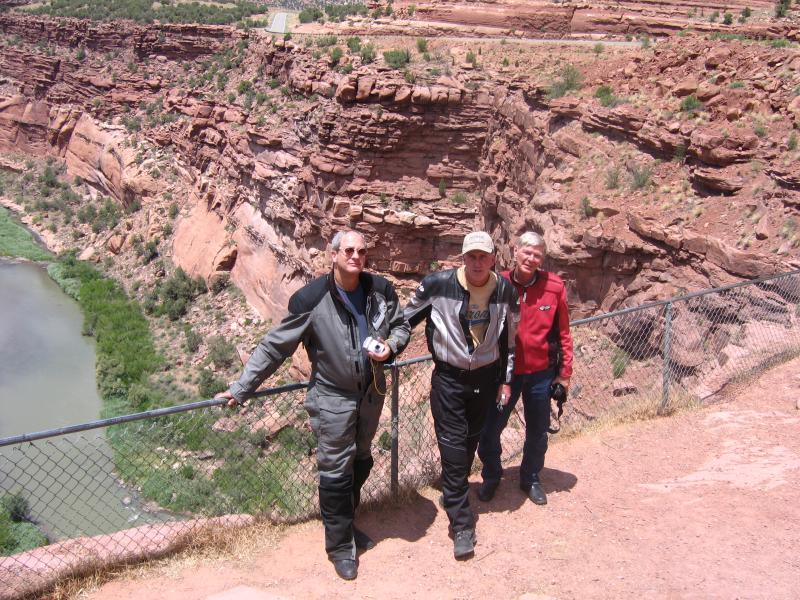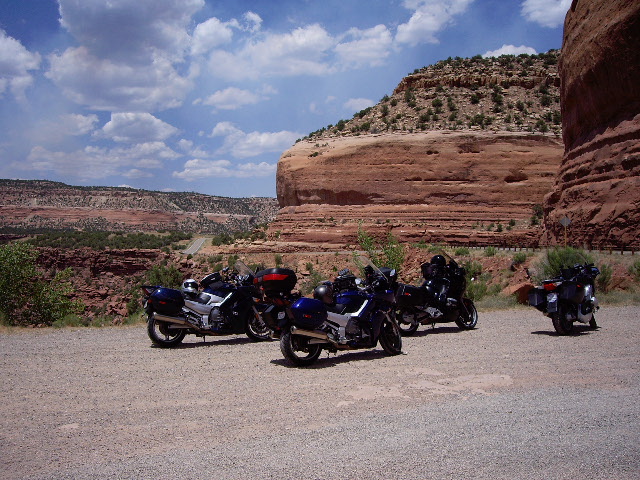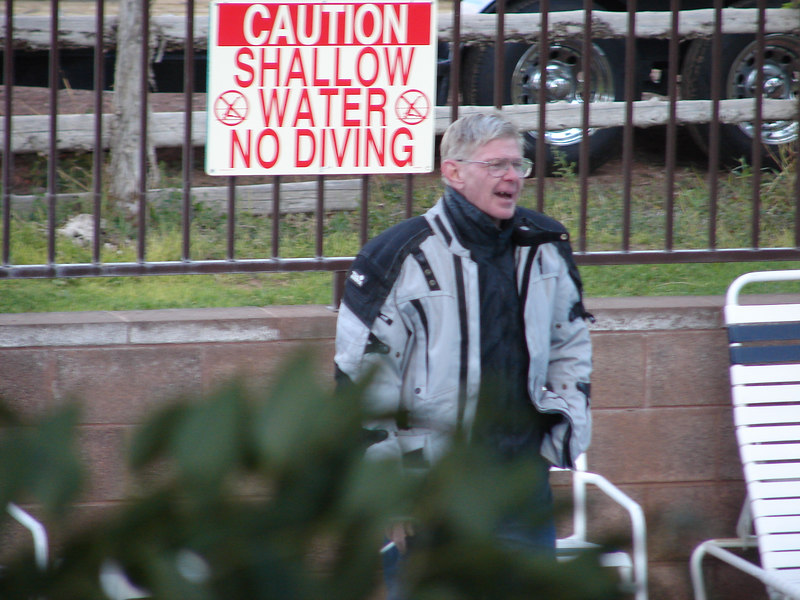I have taken the liberty to edit Mr. Frantz's original text. I hope not to offend Mr. Frantz and if this does I will remove it immediately.
[You sit on top of a sport bike. You sit within a K1200RS. Sport bikes require getting weight off your butt so the rider can slide his/her butt inside corners to affect a different cg. Consequently sport bikes induce weight on the handle bars. Someone sitting on a K1200RS will note some ergonomic differences, and fall toward, positioning their body as if they were riding a sport bike. They probably also carry forward certain muscle memories developed, from other seating positions.
People have learned to sit upright. It is not a function for which the human body was designed, and continued practice causes damage. Automobiles promulgate the poor seated position. Only lately have they applied several things like lumbar support to keep that position from killing the user. Most motorcycles continue the promulgation to one degree or another. They emulate "sit upright," (so much so that the term UJM (universal Japanese motorcycle) was partially defined by a riding position called - sit up and beg, like a puppy. This position became a mental norm. We think that's how a motorcycle is ridden.
The important thing to remember is you learned to do it that way, and you can learn something else. The largest, developed, muscle memory is the angle between torso and thighs. This is controlled by the largest muscles involved in riding. Southeast Asian peoples go about teaching their kids to squat, and that brings on an entirely different thigh/torso relationship. That posture is much more common across all of Asia. Some things can be difficult to overcome for some folks when they have become habits rather than cognizant, controlled responses. A great example is about leaning motorcycles in corners.
The human develops a sense of danger when leaning any farther than when they stand up. Danger signals are sent when lean angle extends much beyond the angle the neck can be bent and still keep the eyes level (20 to 30 degrees). It is our response to body signals that can make up our "sense" of our comfort levels. Those things can change when we control them, rather than the other way round. The K1200RS was designed to promote a canted forward riding position. This was done on purpose by BMW. They knew it was required to get the K1200RS performing to the desired levels, and to keep the rider comfortable for long periods of time, in the regimes where the bike was intended to be most often used (i.e. not riding on city streets). It all starts with a low seating position -- not a high position like a sport bike.
BMW then set out to discover what else needed to be done: add comfort to this position and provide a supporting airflow; support the position by moving the pegs downward while still allowing good ground clearance for cornering; reduce effort to maintain the position by moving them forward to change the support vector. This removes the need to place any weight on the handle bars. Do so if you wish, but you'll pay the price in comfort. You'll also find that you make the bike feel dull and unresponsive, when compared to properly distributing your weight about the bike. Properly is appropriate here in light of gaining the performance qualities BMW built into the bike. Perhaps the motorcycle magazines don't find the riding qualities we owners do when they test the K1200RS: they are riding it differently than it was designed to be ridden.
The keynotes to the riding position are:
1. Bend at the hips, not at the waist.
2. Maintain a slight arch to the back, not allowing it to curve.
3. Move the butt aft so the weight is over your feet.
4. Using your thigh muscles to support your weight.
The goal is to distribute all your weight over your butt and feet – not on your hands.
Move fore and aft on the seat to make all those things happen. Except for the hip bend, they are not absolutes, but rather ranges. Move about until you can see all of them are happening to some extent with no weight being placed on the handlebars. Do this when the bike is stationary. Take the time to sit on the parked bike. Practice - one must teach their own body. You’ll notice that all good training is done by abstract exercises, not just running off to the playing field and doing what you heard. Learn to press down with the feet. Then, when riding, check that's what you are actually doing.
You should be able to lift your butt off the seat at a millisecond’s notice: as when knowingly approaching a severe bump in the road. Learn to bend at the hips. Do it both ways, and show yourself that you can operate the body differently. Be willing to touch that gas tank. Some people are incredibly fearful of touching a gas tank -- it's almost laughable. If you fear scratching the tank, get some clear tank protectors. Better to think "the gas tank is my friend." it will be some day when you are six hundred miles into your ride and still two hundred miles from your destination.
Your body is not yet trained to operate that way. Flap your elbows like a chicken to relax your arms occasionally. Prove you have your weight supported, mostly by your feet and butt. Even after 25,000 miles on an RS, I end up leaning onto the bars and need to readjust my position. Many people will need to change the riding position they use for riding on the K1200RS. Because "sit up" is so common in our lives, it can come to seem we are not operating the body, even to just sit. But, sit on a wooden stool for six hours and feel what you encounter.
The mind controls the body in healthy people. Take the time to sit on the stationary bike when you are learning. Flex, tighten, relax, and move about across a small but definite range of positions on the bike. Without moving, flex all your body muscles, in order, from the feet toward the hands and head. Feel what that feels like when you relax each muscle, and are still holding the proper riding position. close your eyes and feel it. Not all the muscles are fully relaxed. You are using some of them. How? How much? Why? Then, when you've done that for all the body's muscles, flex them all, and relax and feel it over all.
Even go so far as to stand back 10 feet and look at yourself if you can. Attempt to maintain that position, within reason, for as long in your ride as you can. When you are tire, stop. get off the bike and bend, stretch, and flex all your muscles. Walk until you feel normal, and then get back on the bike in the proper position. Repeat. You'll find you ride longer and longer, and comfort grows and grows. Eventually, it will seem normal.
If you notice tightness or pain, stop. You are compensating for something that has already become tired. You need to develop the muscles that you tired out. Right then, it will be had to find that muscle. The next time you start riding; do a better job of finding what muscles you really need to use to hold that position. Begin by riding in a relaxed environment so you can pay attention to your muscles. Continue to adjust your weight distribution via the elbow flapping, weight transfer between feet and butt, and neck twisting. I promise that if you are doing this correctly your riding pains will disappear.
Even Master Yoda gets tired during a 14 hour riding day, and sometimes during just a six hour riding day. Build up your thigh muscles. Let them do the work. Even with bad knees and a bad back I can ride this lovely performing machine from sunrise to long past sunset.
Blessings to you all, Dick Frantz so cal]








